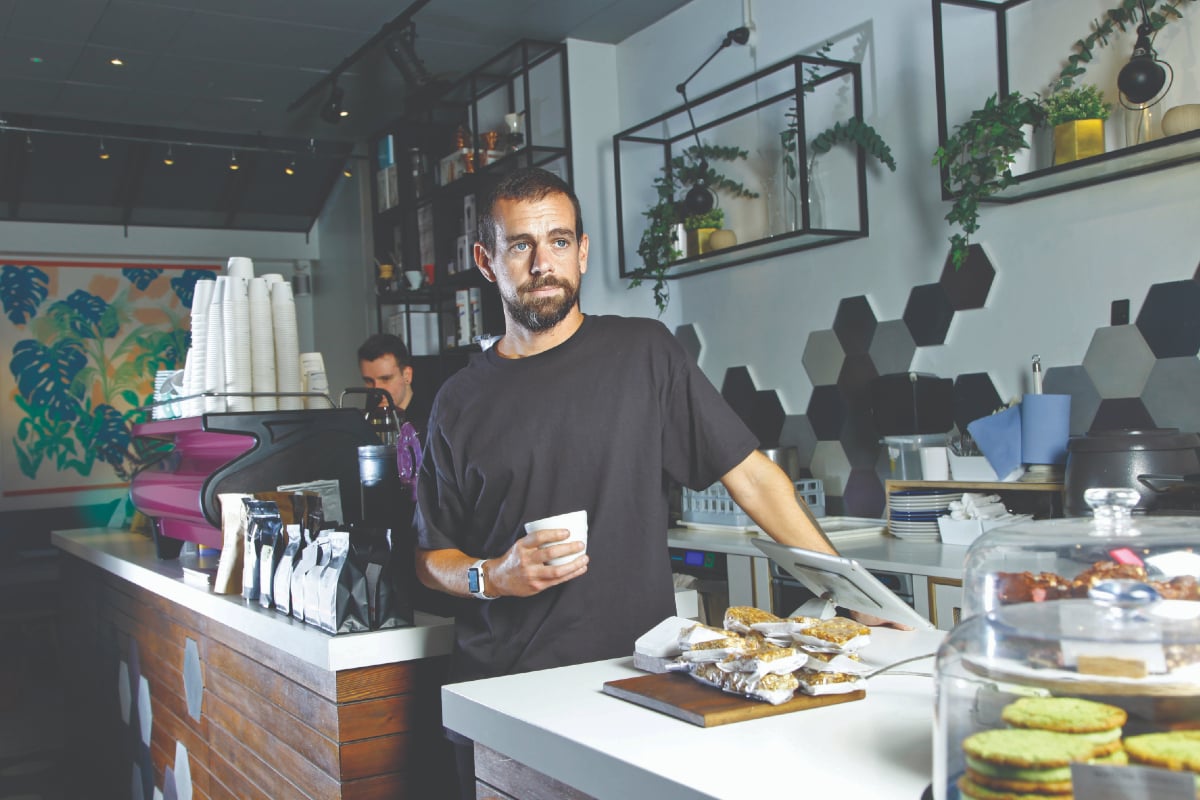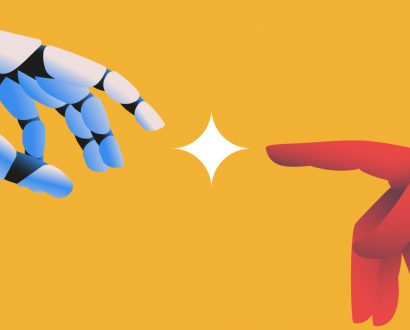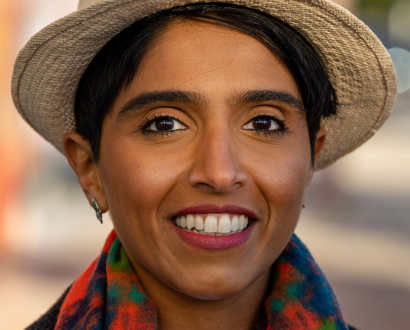Jack Dorsey loves a podcast. He often listens to one as he walks the 8.5 kilometres from his waterfront property in San Francisco’s Sea Cliff neighbourhood to Twitter’s headquarters in the morning (a distance he says takes an hour and 15 minutes to cover on foot). He’s also made his fair share of podcast appearances. Some, hosted by friends and acolytes, are chatty and familiar; others, more probing and critical.
The Daily podcast by The New York Times is a prime example of the latter. “Twitter doesn’t seem to like you exactly. And you don’t exactly seem to like Twitter,” said host Michael Barbaro in an August 2020 conversation. It was a smart observation: in his public appearances, the wellness-loving Twitter CEO comes across as calm, considered and disciplined – the polar opposite of the firebrand keyboard warriors whose clickbait tweets are amplified on the social network he co-founded with Evan Williams, Noah Glass and Biz Stone in 2006. “Do you like Twitter right now? Do you like what it’s become?” Barbaro prodded further. Dorsey’s response (which we’ll come to later) spoke volumes.
In the 15 years since Dorsey posted the first-ever tweet (“just setting up my twttr”) on 21 March 2006, Twitter has moved away from the SMS-inspired personal status updates of its origins to a platform for breaking news and political discourse, the go-to social medium for journalists and presidents. It has also transformed into a tool for social movement, a shift that, for many commentators, has its roots in the Arab Spring anti-government protests of a decade ago. At the same time, it has become a hotbed of cyberbullies, hate speech and the spread of misinformation.
just setting up my twttr
— jack (@jack) March 21, 2006
Along the way, the 44-year-old CEO has been fired, re-hired, started another company (mobile payment company Square) and faced more than one grilling by US Congress. Last year, he was seemingly granted a last-minute reprieve in another play to remove him from the Twitter C-suite (more on that below). With over 187 million active daily users sending 500 million tweets per day, it is the third biggest social media network after Facebook and Instagram. Dorsey became a billionaire when it went public in November 2013.
But he admits that growing up, all he wanted to do was build. “I loved the process of creating something,” he told his friend Rich Kleiman during an episode of the American sports agent’s The Boardroom: Out of Office podcast in August 2020. “I never really wanted to be an entrepreneur. I never wanted to be an engineer. I didn’t want to be a CEO.”
Entrepreneurial blood
Jack Patrick Dorsey was born in November 1976 and grew up in St Louis, Missouri with his parents, Tim and Marcia, and two brothers Daniel and Andrew. As a teenager, he attended the local Catholic high school and worked in his mother’s coffee shop, one of the three businesses started by his entrepreneurial parents. It’s been reported that, among his interests, he dabbled in modelling, was a punk rock fan and ran a fantasy football league for friends.
The seminal moment came at the age of 14 when his father brought home a computer. “It felt like this universe of creation,” he said on The Boardroom. “Like, if I could figure it out, I could create something from nothing, and I could use it, but more importantly, other people could use it.” He quickly got to work, writing open-source dispatch software, which was adopted by taxi companies.
In a similar path to Facebook’s Mark Zuckerberg, Dorsey dropped out of college. But, while he didn’t leave New York University with the computer science and mathematics degree in which he had been enrolled, he did leave with the germ of an idea for what would become Twitter.
“I would rather optimise for making every hour meaningful – or every minute meaningful – than I would maximising the number of hours or minutes I’m working on a thing.” – Jack Dorsey
He would continue to sketch out the concept as he moved cross-country to California and into a role as a coder at Odeo, the publishing podcast startup founded by Stone and Glass. When Apple’s foray into the podcast market with iTunes spelled the end for the business, Dorsey’s idea was the side project come good. Between them, Dorsey, Williams, Glass and Stone built the prototype for Twitter in two weeks.
Dorsey would become its CEO in 2007, but the rules of the corporate world didn’t come naturally to him. By 2008, Williams, growing increasingly frustrated by Dorsey’s pursuit of extracurricular passions such as yoga and fashion, had fired him as CEO (“you can either be a dressmaker or the CEO of Twitter, but you can’t be both,” Williams is famously reported to have quipped).
Licking his wounds, Dorsey went away and founded Square with Jim McKelvey, a friend from St Louis. In 2010, it was Williams’s turn to be ousted and Dorsey returned to Twitter soon after as Executive Chair – and would be reinstated as CEO in 2015.
Jack Dorsey: the controversial CEO
Today, as CEO of both Twitter and Square, Dorsey is one of the few people to head up two large public companies. His story has drawn inevitable comparisons to two other tech visionaries: the late Apple Co-Founder Steve Jobs and Tesla and SpaceX CEO Elon Musk. He spends mornings at Twitter, before crossing the road to spend afternoons at Square.
He has neither a permanent desk nor computer at either office and has said that he works solely off his iPhone (reportedly while standing) where he keeps only one app open at a time for focus.
It’s an arrangement that suits him, but plenty of people aren’t happy with it: his leadership has been described by employees of both companies as “hands off to the extreme”. For some, Twitter is Jack Dorsey, while others argue that neither company deserves to be treated like a side hustle.
The basis for much of the criticism is Twitter’s financial performance: in March 2020, Twitter shares had fallen 6.2 per cent since his return as CEO in 2015, while rival Facebook had grown more than 121 per cent, according to Bloomberg. Square, on the other hand, had gained over 1,800 per cent since its initial public offering in 2015 at the time of writing. There’s also what is often called its ‘glacial’ pace of innovation – the biggest improvement the platform has introduced in the past five years is increasing the length of a tweet from 140 to 280 characters.
Questions have also been asked about the 2016 decision to shut down the short video app Vine, which Twitter had acquired four years earlier, creating a void that has seemingly been filled by TikTok.
Last year was particularly testing: Dorsey found himself in front of US Congress over Twitter’s content moderation policies (“Who the hell elected you and put you in charge of what the media are allowed to report?” fired off Senator Ted Cruz during one particularly heated exchange) and again as debate mounted about whether Section 230, a US federal provision that protects internet platforms from being held accountable for content posted by third-party users, should be repealed.
Internally, he has also faced off against private equity firm Elliott Management, who, after the purchase of US$1 billion (€825 million) in Twitter stock, campaigned for Dorsey to step down from Twitter – or at least from his post at Square. Despite the pressure, he stood firm and a ceasefire was reached in March 2020. It seems to be holding: in November 2020 a Twitter board committee recommended that he remain as CEO. He was helped by strong third-quarter financial results that outperformed Wall Street’s expectations.
Unfollowing convention
How does Dorsey deflect the constant criticism about his dual-CEO roles? “To me, this is not a function of time; it’s a function of prioritisation,” he responded to Twitter shareholders at its annual meeting in May 2020, according to the Wall Street Journal. He often speaks about quality over quantity in the workplace. “I would rather optimise for making every hour meaningful – or every minute meaningful – than I would maximising the number of hours or minutes I’m working on a thing,” he explained to Kleiman.
Where he does receive praise is in his philanthropic efforts. He is one of Silicon Valley’s most generous executives: as his US$1 billion (€825 million), or 28 per cent of his wealth, donation to COVID-19 relief, girls’ health and education, and universal basic income charities highlights. He told American entrepreneur and former presidential candidate Andrew Wang (in a podcast, of course) that he wanted to give out all his money in his lifetime. “I want to see the impact,” he said.
His lockdown look fits the portrait of an unconventional leader, one who generates headlines for his lifestyle as much as his leadership. At the time of writing, he was sporting a long, wizard-like salt-and-pepper beard. A beanie and nose ring are standard uniform – as is a pair of Rick Owens sneakers at US$1,000 (€825) a pop.
He dates models and has celebrity friends. When he travels, it’s to Myanmar on 10-day silent retreats – although tweeting, “If you’re willing to travel a bit, go to Myanmar,” amid the Rohingya crisis wasn’t without controversy. He raised eyebrows again in November 2019 when he tweeted that he would temporarily move to Africa in 2020 to study, among other things, the potential for Bitcoin, another of his passions (a move that has since been reconsidered).
During the year of soul-searching after his ousting from Twitter, he turned to meditation and the practice still remains an essential part of his morning routine today. He wakes at 5am and only eats one meal a day: dinner. His daily wellness rituals have been known to include ice baths, cryotherapy pods and infrared saunas. He journals and tracks his sleep. His life is spartan, almost monastic, prompting The New York Times to label him the Gwyneth Paltrow of Silicon Valley.
On the subject of The New York Times, and Barbaro’s probing podcast question, Dorsey responded with his usual cool that a big part of Twitter isn’t clickbait and it’s where he finds his place in the world. “I use Twitter to listen, observe and understand our world and my world and myself, ultimately,” he said. But he did acknowledge that the platform risks becoming irrelevant if it doesn’t change.
And so it seems that, as long as he remains relevant to Twitter, Jack Dorsey is now exactly where he wants to be.
Feature image: Australscope







